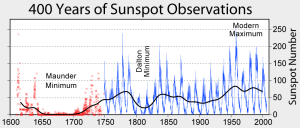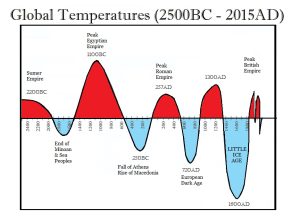 40 Million in US West Without Water ...
40 Million in US West Without Water ...  turiya
26 m
400
turiya
26 m
400
9 Day Juice Fast Kit
Juice fast without hunger.
Original Hulda Clark
Hulda Clark Cleanses
End Constipation Now
Let oxygen remove old, impacted fecal matter as it detoxifies and...
By Greg Hunter’s USAWatchdog.com (Saturday Night Post)
Climate engineering researcher Dane Wigington says the extreme drought conditions in the U.S. are caused by man-made weather modification called geoengineering. It’s not some naturally occurring event, but an “engineered drought catastrophe.” Wigington says after decades of climate engineering, things are getting so bad that millions in the Southwestern United States will be without water sometime in 2023. Wigington explains, “The mainstream media and official sources are doing their best to sweep it under the rug. We are talking about 40 million people that will be impacted by the drying out of the Colorado River basin and tributaries.”
Los Angeles, San Diego, Phoenix, Tucson and Las Vegas are the few of the cities that are already struggling with severe water conservation restrictions. Wigington says, “Drought caused by man-made weather modification is not coming, it’s here now and will only get worse from here on out. . . . There is no speculation, no hypothesis or conjecture in any of this. Climate engineering is the primary cause for the protracted drought, and not just in the U.S. but in many other parts of the world. It also causes a deluge scenario, and all of it is crushing crops. We can speculate to the motives and agendas behind those who run these operations, but the fact that climate engineering is the primary causal factor for the western drought is inarguable.”
When will this all take place? Wigington’s data says, “When Lake Mead reaches the ‘dead-pool’ status, and we are not there yet, the estimations are the dead-pool might be early next year. Prior to that, right now, we are talking about extreme water rationing. That means the crops are being cut off now. It’s not coming, it’s happening now. . . . Water for irrigation is long since gone, and there will be no electrical power generation. . . . The evaporation levels are far higher than what has been disclosed. That means lake levels will drop far faster than even the worst-case official predictions right now. This is a runaway train of total cataclysm, and those in power are preventing anyone from even discussing this issue down to the point that there is an illegal federal gag order on the nation’s weathermen at the National Weather Service and NOAA.”
According to Wigington, one city will be spared from drying out for a while, and that is Las Vegas. There is a tunnel 600 feet below the surface of Lake Mead that will take water to Sin City long after the lake becomes a dead-pool and the Colorado River stops flowing. Wigington says, “This was an extraordinary engineering project. The only one of its type in many ways. . . . They had to have a specially designed tunnel boring machine for the 24-foot-wide tunnel that is designed to suck every last drop of water out of Lake Mead.” The project cost $1.5 billion.
Wigington says what is happening is being hidden for as long as possible, but what needs to happen now is to immediately stop man-made weather modification. Wigington says, “They can and are using this as a weapon to control food production and control populations in various regions. . . . This is a fight for life. People think if they get their shots and wear their masks that their life will go back to normal. It’s not going to happen. . . . Climate engineering is stopping the planet from recovering. . . It’s a weapon. . . . We have to stop it or we are done.”
There is much more in the 43-minute interview.
Join Greg Hunter of USAWatchdog.com as he goes One-on-One with climate researcher Dane Wigington, founder of GeoEngineeringWatch.org for 7.16.22.
Article Link: https://usawatchdog.com/40-million-in-us-west-without-water-in-2023-dane-wigington/
-
 Armstrong Economics: Global Water Sc... turiya
26 m
417
This is a reply to # 2,449,267
Armstrong Economics: Global Water Sc... turiya
26 m
417
This is a reply to # 2,449,267Blog/Agriculture
Posted Jul 20, 2022 by Martin Armstrong
Spread the loveA new study by the University of Colorado Boulder published on “One Earth” cites water scarcity as the top threat to food security in the next 20 years. “Multiple events occurring at the same time compound the problem,” the study noted, citing droughts, floods, heat waves, pest outbreaks, diseases, and financial and political conflicts. Over 50% of those experiencing food insecurity live in conflict regions, and increasing political instability and civil unrest will cause this figure to rise. Various agencies such as the World Bank and United Nations have cited that food insecurity reached record levels in 2021 and has increased in 2022. However, one aspect that is not often discussed is water.
Humans can survive longer without food than water. Without water, there are no crops or cattle. Other studies point to increasing global demand for water as well. A 2019 study, “Reassessing the projections of the World Water Development Report,” found that water demand increased 600% over the past century.
“Global water demand for all uses, presently about 4,600 km3 per year, will increase by 20% to 30% by 2050, up to 5,500 to 6,000 km3 per year. Global water demand for agriculture will increase by 60% by 2025. By 2050 the global population will increase to between 9.4 to 10.2 billion people, an increment of 22% to 32%.”
Agricultural needs represent 70% of water demand. The poorest nations often have less access to clean water, and these are the same areas where the population is expected to rise. The aforementioned study also states that food demand will increase by 60% by 2050.
Our model projected entering another “grand minimum,” which overtook the sun beginning in 2020 and will last through the 2050s. This will result in diminished magnetism, infrequent sunspot production, and less ultraviolet (UV) radiation reaching Earth. We are facing a global cooling period on the planet that may span 31 to 43 years. It is interesting that these studies are pointing to 2050 as the point where water will become extremely scarce as it aligns with our models’ projection for the weather as we will then enter a new sunspot cycle.
Categories: Agriculture, Climate
Tags: 2050, Agriculture, Climate Change, famine, grand minimum, waterArticle Link: https://www.armstrongeconomics.com/markets-by-sector/agriculture/global-water-scarcity-on-schedule/
- Re: 40 Million in US West Without Wa... turiya
26 m
507
This is a reply to # 2,449,267
Blog/Corruption
Posted Jul 22, 2022 by Martin Armstrong
Spread the loveOur models have been indicating a decline in both the food and water supply, which go hand-in-hand. Other analysts are coming out to warn that the inevitable cycle is underway. Climate engineering researcher Dane Wigington believes the cycle has been propelled forward by manmade forces. “The mainstream media and official sources are doing their best to sweep it under the rug. We are talking about 40 million people that will be impacted by the drying out of the Colorado River basin and tributaries.”
Interviewer Greg Hunter plainly asked Wigington if this was a deliberate attempt to diminish the population. “Yes,” he replied without hesitation. “There is no speculation, no hypothesis or conjecture in any of this. Climate engineering is the primary cause for the protracted drought, and not just in the U.S. but in many other parts of the world. It also causes a deluge scenario, and all of it is crushing crops. We can speculate to the motives and agendas behind those who run these operations, but the fact that climate engineering is the primary causal factor for the western drought is inarguable.”
Wigington sees extreme water rationing coming as soon as 2023. Once Lake Mead reaches “dead-pool” status, crops will die out, water will be unavailable for irrigation, and there will be no electrical power generation. Drought is causing water to evaporate at levels beyond what is reported in the mainstream media.
“This is a runaway train of total cataclysm, and those in power are preventing anyone from even discussing this issue down to the point that there is an illegal federal gag order on the nation’s weathermen at the National Weather Service and NOAA,” Wigington stated. The government would only place a gag order on reporters if there were something to hide. Climate engineering may be one of the new tools to fight future wars and control the population.
-

